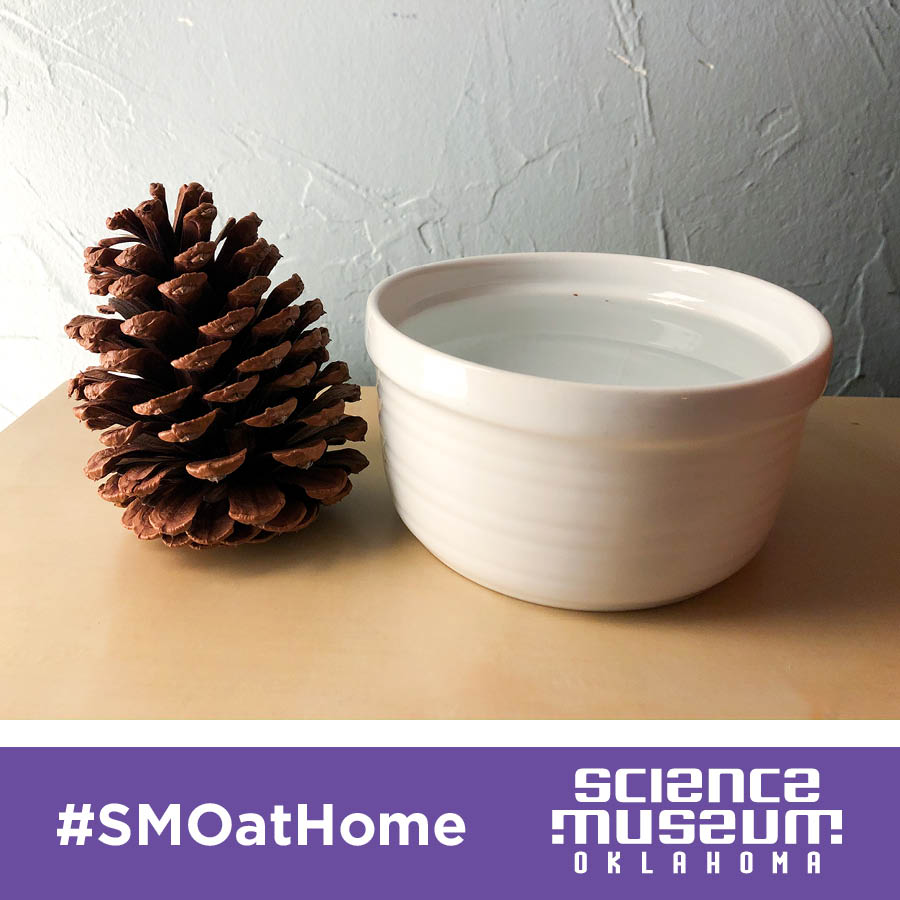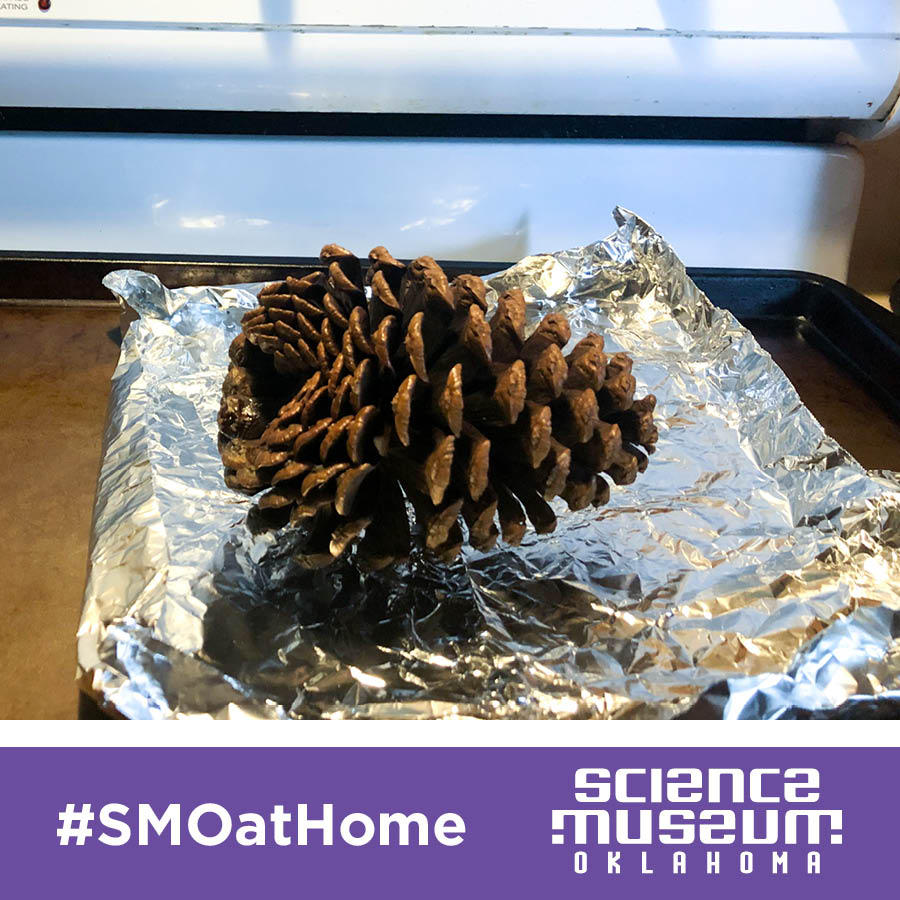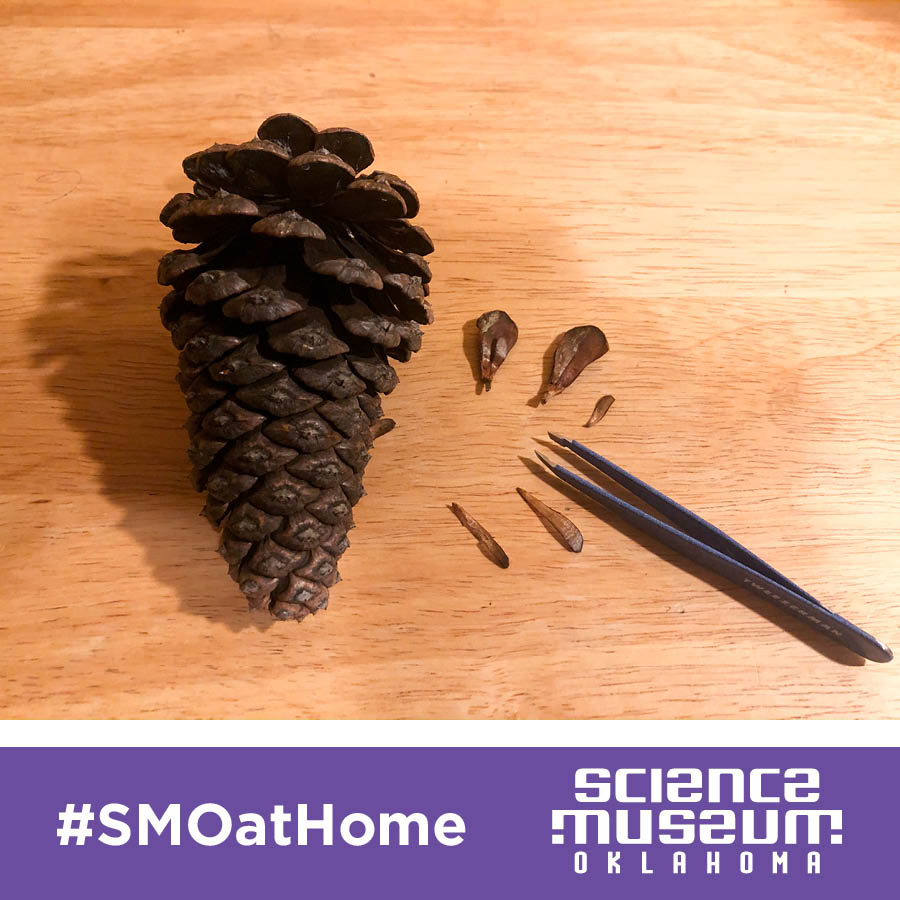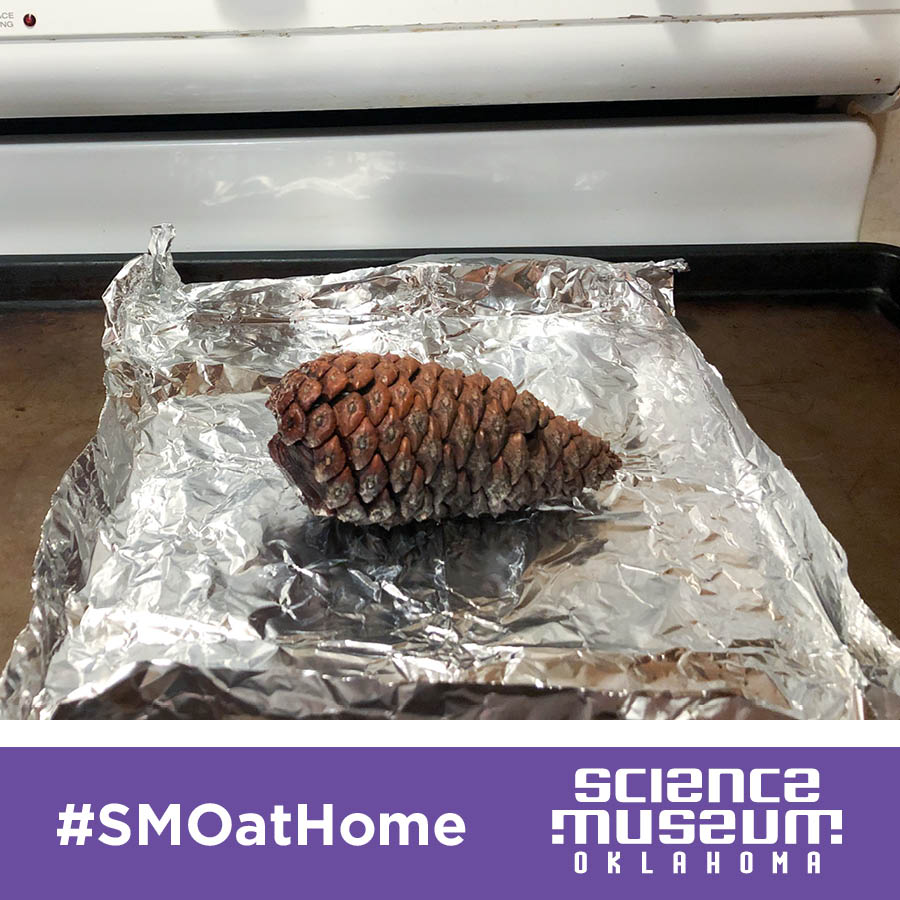Try This: Investigate Pinecones!
Maybe you’ve gone for a few walks lately and noticed that pine cones are resting on the ground. How long have they been there? Are the pine cones you see open or closed? Does that change? Next time you see a pine cone on one of your walks, consider picking it up. There’s a lot to discover!
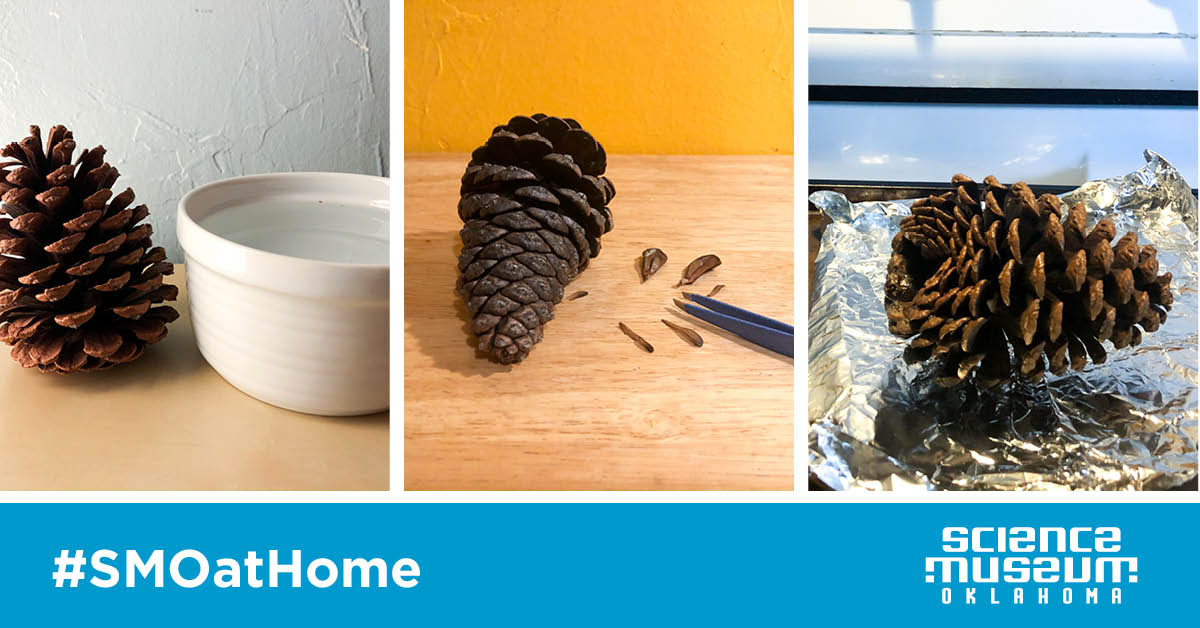
Here’s what you need:
- A pine cone, if you see several types of pine cones pick up a couple different kinds
- Water in a container
- Oven or other heat source
- Tweezers
- Pencil and something to write on
- Help of a responsible adult
Here’s what you do:
Examine the pine cone. Is it open or closed? Draw the pine cone. Look at the scales of the pine cone. How do they fit together? Is there anything between the scales? How are the scales different at the top of the pine cone than the bottom?
If the pine cone is open, can you make it close?
1. Place the pine cone in a container of water.
2. Observe as the pine cone changes. How long does this take? If you have two, or several types of pine cones, place them in water of different temperatures. Does the temperature of water affect how quickly it closes?
If the pine cone is closed, can you make it open?
1. Preheat the oven to 250 degrees Fahrenheit. Place the pine cone on a cookie sheet, or pizza pan, with a piece of aluminum foil underneath, and put it in the oven.
2. Check the pine cone every five to ten minutes. You may need to ask a responsible adult for help. How long does it take for the pine cone to open? It may take a while for the pine cone to open, so be patient and keep checking it. You don’t want the pine cone to burn.
3. If you have several types of pine cones, observe how quickly each type of pine cone opens. Does the size and shape of the pine cone affect how quickly the pine cone opens?
Take a look!
Examine a pine cone closely. Use tweezers to look at all parts of the pine cone. Write and draw to record your observations. Can you find the pine tree seeds? Look for thin blades of woody material between the larger pine cone scales. With the tweezers reach in between the larger scales, pull out the pine tree seed. What do the pine tree seeds look like? You may choose to remove several scales, and document their appearance.
What is happening:
Pine trees belong to a group of plants called gymnosperms that date back all the way to the Carboniferous period. Unlike angiosperms, or flowering plants, gymnosperms produce seeds that are often located on scales that are protected by a cone form. The pine cone functions to protect the seeds, by closing tightly until the conditions are just right for the seeds to be released. Pine cones will open up to release the seeds when conditions are favorable. When you place the pine cone in different conditions, the pine cone responds to the environmental stimulus.
Most of what we recognize as pine cones are female. We may see these seed-producing pine cones on a tree or on the ground, and may even take them in our home as a decoration.
Did you know there are also male pine cones? These pollen-producing pine cones look much different. Next time you are out for a walk, see if you can see a male pine cone on a tree.




